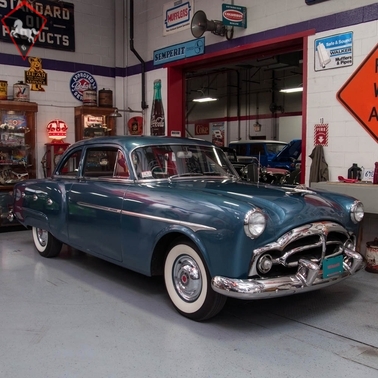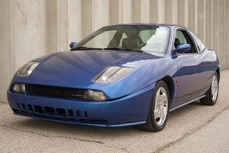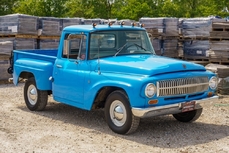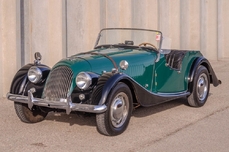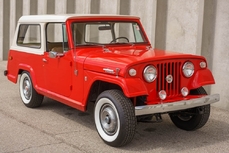Packard 200/250 Inline 8 1952
General description :
1952 Packard 200 Club Sedan
Yosemite Blue Metallic exterior (code H) with a gray interior featuring dark and light gray striped broadcloth upholstery and door panels (code 44)
288 CID L-head straight engine with a two-barrel carburetor
Ultramatic two-speed automatic transmission
Documentation includes a folder full of maintenance and repair receipts plus other miscellaneous documents related to the car going back at least 20 years
MotoeXotica Classic Cars is pleased to offer yet another vehicle from one of Americas last independent car makers a 1952 Packard 200 Club Sedan finished in a very handsome Yosemite Blue Metallic paint that is very striking in the sun!
The 1952 Packard models (also known as the 25th series) were changed little from the 1951 models. The block letters were removed from the hood, the parking lenses became fluted radially and this theme was repeated in the deluxe wheel covers, which are unique to this year. The optional hood ornament’s wings were laid down along the hood centerline. While it was the entry-level Packard line, the 200 came with twin horns, two sun visors front and rear bumper guards spare tire and jack set.
This example is finished in Yosemite Blue Metallic (code H) that is in excellent condition overall. We spotted only a lone blemish on the passenger side door trim. The glass panels are clear and crack-free, as are the cars lights. The car rolls on wide BFGoodrich Silvertown whitewall tires, size 7.60-15, with factory wheel covers within that are in very good order. Currently the wipers and horn are inoperable. All of this cars body panels are solid and straight and combined with the color, lend it a very stately appearance. The engine bay is tidy and the bumpers are in very good condition.
Inside, the car is dressed in gray with dark and light gray striped broadcloth upholstery and door panels (code 44). The bench seats are in good shape while the gray carpet is in decent order. The headliner looks good and gray metal instrument panel looks fantastic and combined with the striped broadcloth, give it a classy look inside. The two-spoke steering wheel is in good order, as are the door panels, mirror glass and shift lever. Rounding out the interior is a factory AM radio.
Items which have become standard on vehicles since the late 1960s like heaters, radios, tinted glass, carpeting, etc., were all optional on the Packard, as well as other premium cars during that era. Packard also became the first carmaker to offer power brakes in 1951. Called Easamatic, they were a Bendix product and exclusive to Packard.
Competition to this Packard in 1952 included DeSotos Custom Club Coupe and Mercurys Monterey Custom Coupe with Merc-O-Matic.
Documentation includes a folder full of maintenance and repair receipts plus other miscellaneous documents related to the car going back at least 20 years.
This car is currently located at our facility in St. Louis, Missouri. Current mileage on the odometer shows 1,761 miles. It is sold as is, where is, on a clean and clear, mileage exempt title. GET OUT AND DRIVE!!!
CLICK HERE TO VIEW OUR YOUTUBE VIDEO
VIN: 25953686
http://www.motoexotica.com/inventory/listing/1952-packard-200-club-sedan/
1952 Packard 200/250 Inline 8 is listed sold on ClassicDigest in Fenton (St. Louis) by for $15500.
Car Facts
Car type : Car Make : Packard Model : 200/250 Model Version : Inline 8 Engine size : 0.0 Model Year : 1952 Sub type : Sedan Location : Fenton (St. Louis)
Sold
Seller Information
Sold
People who viewed this Packard 200/250 also viewed similar Packard listed at ClassicDigest
Other cars listed for sale by this dealer
About Packard
Packard: A Comprehensive HistoryEarly Years and Foundation:
Founding: The Packard Motor Car Company was established in 1899 in Warren, Ohio, by James Ward Packard, William Doud Packard, and George Lewis Weiss.
Pioneering Luxury: Initially producing high-quality automobiles, Packard became synonymous with luxury, craftsmanship, and engineering excellence.
Notable Achievements and Contributions:
Packard Twin Six: Introduced in 1916, this V12-powered car established Packard as a premier luxury automobile brand.
Model Line Expansion: Packard expanded its lineup with various models, including sedans, coupes, convertibles, and limousines, catering to affluent customers seeking elegance and performance.
Engineering Innovations: The brand introduced several innovations, such as the first use of aluminum pistons, air conditioning, and the Ultramatic automatic transmission.
Ten Historically Significant Models with Technical Specifications:
Packard Twin Six (1916):
Engine: 7.3L V12 engine.
Performance: Around 85 horsepower.
Packard Eight (1930-1938):
Engine: Straight-8 engine with various displacements.
Performance: Ranged from 90 to over 130 horsepower.
Packard Super Eight (1939-1951):
Engine: Straight-8 engine.
Performance: Produced between 130 to 180 horsepower.
Packard One-Twenty (1935-1942):
Engine: Straight-8 engine.
Performance: Approximately 100 to 120 horsepower.
Packard Clipper (1941-1957):
Engine: V8 engine.
Performance: Ranging from 135 to 185 horsepower.
Packard Caribbean (1953-1956):
Engine: V8 engine.
Performance: Varying between 275 to 310 horsepower.
Packard Patrician (1951-1956):
Engine: Inline-8 and V8 engines.
Performance: Ranged from 150 to 180 horsepower.
Packard Hawk (1958):
Engine: V8 engine.
Performance: Produced around 275 horsepower.
Packard Executive (1956-1958):
Engine: V8 engine.
Performance: Varying between 240 to 290 horsepower.
Packard Predictor (1956):
Engine: Concept car showcasing design and technology.
Performance: Prototype model.
Legacy and Influence:
Quality and Elegance: Packard was revered for its exceptional build quality, refined styling, and luxury features, often considered on par with European luxury brands like Mercedes-Benz.
End of Production: The brand faced financial struggles in the 1950s, leading to its merger with Studebaker and eventual discontinuation in the late 1950s, marking the end of an era in American luxury automobiles.
Packard left an enduring legacy in the automotive industry, symbolizing elegance, engineering excellence, and a commitment to luxury that has been admired and respected by car enthusiasts worldwide.
